British Typhoon jets conducted a long-planned live fire exercise with the Royal Navy, and United States counterparts on a decommissioned United States Navy warship.
The RAF say that three RAF Typhoon jets, HMS Westminster, a Wildcat helicopter, a United States P-8 Poseidon, F-15Es Strike Eagles and USS Arleigh Burke used an array of high-powered weaponry for simulated attacks on the decommissioned frigate, USS Boone.
The Typhoon jets launched Paveway IV precision-guided munitions with support from a Royal Navy Wildcat helicopter, which used its laser targeting pod to highlight the exact impact point.
“Extensive preparations took place over many months beforehand to ensure the exercise was conducted in a safe and environmentally compliant manner, including the removal of toxic materials and pollutants from the US ship before she was able to be used as a target in this way.”
The Royal Navy and Royal Air Force put on a “formidable display of firepower with United States allies against a specially prepared ex-US Navy warship in the North Atlantic”. The exercise, named Atlantic Thunder, was the first of its type for the UK in 18 years and took place alongside US Navy and US Air Force counterparts.
“It was a rare live test of complex weapons against a realistic target far out to sea and tested the power and accuracy of naval and air forces, giving allies real-world experience of hitting targets at sea from long range and proving the capability of several advanced warfighting and targeting techniques.”


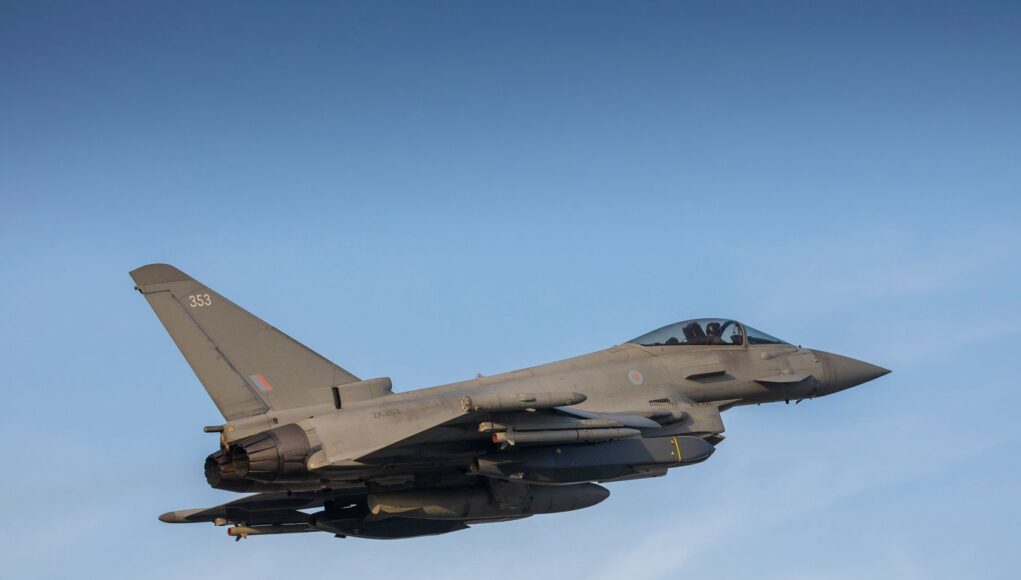
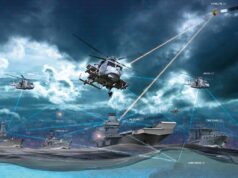

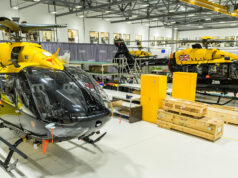



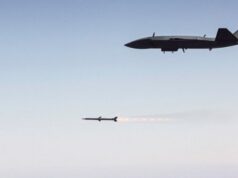
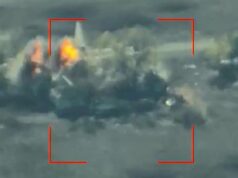
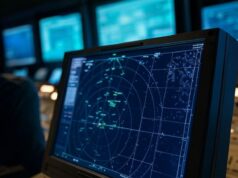


at last – someone in the RN’s starting to see that basic maritime surface warfighting means an ASuW capability! Without it against a peer threat the RN wouldn’t last till tea time! roll on interim – and sharpish!
“Without it against a peer threat the RN wouldn’t last till tea time!”
Why? Are our escorts going to be lined up like skittles within range of the Russian/Chinese ships?
That is not the way the RN operates and I suggest the Russian ships would never get within missile launch range, even supposed they could target our ships, with all the difficulties that entails, before they were negated by NATO assets.
The ships have ASM capability, from their helicopters. Sea Sceptre also has the capability. T23s still have Harpoon, which hopefully will be extended or updated.
Ships don’t line up like two fleets from ww2 lobbing missiles at each other.
Thank goodness someone else doesn’t think that large anti ship missiles are the only way to take out a ship and without them it’s game over🙈
Nope, but without them we’re at a significant disadvantage. Rotary capability has it’s limitations. Getting rid of harpoon without a replacement is at best complacent at worst criminal negligence.
A peer threat will look for, plan for and train to exploit RN weaknesses. A peer foe’s N2s don’t sit on their arses, they’ll look at strengths and weaknesses and work a set of TTPs. Without a harpoon successor or any BTH heavyweight capability the RN (t31, t45) wouldn’t last long against a peer warship. We make it easy for them to exploit weaknesses as a unit, or as part of a group. Rotary assets won’t try or even get inside the threat engagement rings.
Well said.
Hmm, tell that to the Italians, French and US Navies. History has an unerring capability of repeating itself. When and where is a ship most vulnerable? The answer is, when she is tied up alongside a dock.
If in the future, we were to fight against a peer Nation. You can bet one of their key priorities is to try and take out as many ships as possible, either during to the hours leading to the declaration of war or at T0 straight after it. After all it takes years to build let alone get in to service.
You can also bet the weapon of choice would be submarine launched cruise missiles. If that was the case, how easy would it be for ships tied up in Pompy or Devonport to spin up their defences and take out incoming threats over the city? The RAF certainly could take a few out via the Typhoon QRA. But they wouldn’t be able to take out most, especially if more than one sub was involved in a coordinated strike.
Exactly reinforcing my point Davey, regards the clamor from posters for ASM on ships.
My points above addressed ship vs ship using ship launched ASM on the high seas.
The threat is indeed from subs and aircraft, as I suggested on the other thread. I don’t even think the Russians use their surface fleet that way.
No amount of ASM on warships will change that!
The defence of the fleet while at anchor is a different ballgame and subject area entirely to the complaints we lack ASM.
Addressing that area that you mention…where to start? How able are ships to activate quickly and disperse?
How comprehensive is the RMP?
How comprehensive is NATOs knowledge on where these subs are regards IUSS? Many of the answers are classified.
Finally, defence against that threat is ASW and Air Defence related, for which the RN is well equipped at least, in quality if not number.
During the Cold War, both the Kirov and smaller Slava cruisers were expected to hunt down and engage a carrier battle group. How they expected to survive such a battle is open to debate. But they would have lobbed loads of P700/1000s at the carrier group. Plus, would probably coordinating with subs and Tu95s/Tu22s as part of a coordinated strike. The carrier’s Hawkeye would easily spot a swarm of anti-ship missiles the size of the P700s. But they might try a Red Storm Rising tactic.
But therein lies the conundrum. Air power will always trump surface sea power. So why bother having ship launched anti-ship missiles (AShMs) as to target anything over the horizon you require a 3rd party to give the missile mid-course guidance corrections? Which means for a ship operating on its own, it will require an organic air asset such as a helicopter or UAV. Or lob missiles over the horizon blind, hoping the intel it used for determining a threat is there is valid!
Besides when was the last time a warship had a slogging match with another warship, let alone lob a few AshMs at it? I think this has been the reasoning behind the malaise to keep Harpoon updated and the very slow pace at replacing it. Leaving the onus of sinking ships to the SSNs. I believe there has been a significant change of thinking within the Navy, over the requirement for ships to have AShMs. Due in large part to the latest missiles having a dual role. In that they are also very capable land attack weapons.
The LRASM in particular with its RF analyser has the better ability to hunt shipping. As the analyser has a much wider field of view over a narrower cone that a radar or infrared seeker uses. This is one of the reasons why the NSM is getting a derivative of BAE’s analyser. It allows the missile the ability to loiter and wait for the target to emit, which it can then home in on. Which then allows the IR seeker to help lock on the missile when it gets in range.
For a frigate or destroyer tied up in Pompey or Devonport, firing up the radar, CMS etc can be done fairly quickly. But we “should” get prior warning from the ground radar network along with AWACS feeds. However, since the Cold War, the RAF’s QRA numbers have significantly been reduced. We may be able to get 4 to 6 Typhoons up easily. Each carrying 6 Meteors and 2 ASRAAM, giving a max of 36 BVR and 12 WVR missiles (or 48 total). IS this enough to counter a pre-emptive multiple coordinated attack? Possibly not, but it may buy time for the ships to spin up their systems. Can they get out of port quickly enough though? Plus, there is the contentious problem of authorising live missile firings over the two cities and dealing with the likely repercussions of civilian deaths from the debris. Also, the topography around both ports do not favour ship based BVR air defence.
In my mind hopefully we will get an additional batch of E7s. Which gives a better look down capability search and track of stealthy low flying cruise missiles over E3s. But it’s the overall intelligence picture that needs maintaining and improving, that would give the pre-emptive strike build-up warning.
Which we will have to trust in, as that’s classified.
It’s a good point regards duel role ASM, Land Attack, actually.
I’ve no worries regards the effectiveness of the RAF ASCS set up. ( Now 11 Group again ) just the number of Typhoon.
Both QRA (N) and QRA (S) have 2 AC as far as I know, so makes sense you mention 4 to 6, maybe a 3rd can be added. They might also need dispersing if the attack comes from the W, SW, which is possible as certain stations, such as Boscombe, and I believe Yeovilton or Culdrose, have QRA facilities in place post 9/11. Can they arrive in time from Coningsby Lossi otherwise if a launch came from the SW approaches into Devonport?? I’m dubious.
I have a feeling that there will be a second F35 station announced in the near future. If we do have 75 or more aircraft, there isn’t space at Mareham to house them all. Which would mean reinstating an older base. A number of bases still have HAS sites. But these are in the care and maintain condition, not the keep up to date condition. Therefore, money will need to be spent to instigate a new F35 base. The question would be which base to reinstate? We have one in the North (Lossie), one central (Coningsby), one, in the east (Mareham), but nothing in the West. Could we see Cauldrose, St.Mawgen or Yeovilton, re-established with new facilities for F35s? Although slower than a Typhoon, could we see F35Bs placed on QRA for looking after the Western Approaches and Southern Ireland? It would certainly cover the southwestern gap.
I have thought a fair bit about what would suit the Navy surface fleet for an AShM, but with a dual use. The most obvious choice is NSM for a number of reasons. Firstly, it will comply with today’s peacetime rules of engagement (ROE). In that it has a two-way data-link, but also a high-resolution imaging infrared (IIR) seeker. That is used to compare images against library images to validate a target. Secondly it has been designed to be stealthy for penetrating peer air defences. But perhaps thirdly like is brethren JSM, it will be getting BAe’s RF analyser. This may not sound a big deal, but it allows the missile to hunt for targets. As it uses detected emissions to compare with a stored library, thereby allowing it to home in on a valid target. As soon as the target is in range of the IIR seeker it will be further validated.
The LRASM would be the gold-plated interim solution, but it might also encroach into the FCASW territory. Plus, it’s about a $1M more expensive than NSM.
As far as defending Pompey or Devonport. I have always said we have most of the PAAMS system on Portsdown Hill. So why not add a battery of Aster/CAMM? It would cover Pompey and also a large swath of Southern England. For Plymouth, perhaps reinstate a PAAMS battery at Fort Bovisand, as the hill overlooks Plymouth. Just a thougfht!
Bovisand makes sense, as does Portsdown MWC / LBTS. We’ve discussed that before and seems such an opportunity not to be missed.
Regards 2nd F35 location, I think it must be a location with HAS, even if not used for years and all the requisite fast jet infrastructure. That gives only so many locations., Leeming and St Mawgan both spring to mind. Leeming still has flying ops even though 100 Sqn went, and had 3 F3 Sqns once. It has at least 2 HAS sites. Mawgan also has a HAS site but is now Newquey airport, tbough the RAF Station remains to the west of the runway where the JMF was and STO are still located, a place you know well no doubt. It also has the SA ammunition compounds but turning it into a dly8ng station with all the personnel needed for the station wings is in itself some uplift for the RAF these days.
Other options with HAS are Honington, not used for ages, Wattisham, a no no, Woodbridge, Boscombe, Leuchars.
My money would be on St M or Leeming, which also had a ventral QRA once but doesn’t solve the SW issue, which Mawgan does.
Is it me or does that make perfect sense?
Leeming would make sense. It’s not a million miles away from Mareham. The old 11 Sqn HAS site was still working about 5 years ago. Not sure now? As we did an exercise or two from there. When there’s no heating, the insides are bloody freezing. When the brief said bring an artic sleeping bag, I laughed, very glad I did though! Mind you, also did a course there, but was in proper accommodation for a few months. Being right next to the A1(M) has its advantages. Plus there’s plenty of space for new buildings.
I know St.Mawgan very well. Having done a few exercises from there plus the Escape and Evasion course amongst others. There’s still the MkIX Spitfire in mateys garden, towards the end of the runway.
I have a funny story about nearly being eaten by the RAF police dogs after a night out in Newquay. Somebody had clearly moved the gate!
St.Mawgan has got very busy recently, as that’s where the Virgin horizontal rocket launch is (will be) done from. Plus there’s an aircraft recycling center using the old Nimrod pan. There is still a lot of real estate for new buildings. Plus its only a 100 miles or so to Pompey. Therefore the jets won’t have far to go to meet up with the carriers.
With regards to Portsdown Hill at least, it might actually be worth writing to Ben Wallace to point out the advantages of making it a fully functioning PAAMS. It might start a cog turning, who knows?
Might well do. I do suspect sometimes I’m somewhat blacklisted by MoD due to the number of FOIA I used to send! They ended up not replying, which I’m sure is illegal but never mind ! That was some years back now though. No harm in it.
If this was an actual warship with SAM’s then you wouldn’t be using Paveway to attack it as you’d end up in the engagement envelope OF the SAM.
We need a proper, long range ASM such as the JSM but the priority should be to fit them on the F35’s flying from our carriers and not on land based Typhoon’s. Carrying the JSM would need to be on external pylons thus reducing stealth effectiveness but that doesn’t matter on the anti-ship mission if your ASM outrages your opponents SAM
You’ve hit the nail on the head. It’s a static target ship. It’s a good exercise but clearly can only go so far. There’s no exercise which I’m aware of where a target fires back unless it’s simulated i.e. SAMs. Hence the use of Paveways. No interdiction using bombs smart or otherwise would occur without a SAM threat being neutralised.
I agree we need AMS but I would not agree it should be solely limited to aircraft carrier-based aircraft such as the F35. What happens if there’s a requirement where the carriers are the other side of the world?
F-35’s launching SPEAR3 SEAD could be used to reduce/take out SAM threat allowing long range strike by voyager supported Typhoons ?
There are but you never get to see the anti missile and CIWS tests.
Believe me: it is well known what works well for what and it is thoroughly tested.
Weapons system combinations are not accidental or due to someone skimming the sales catalogues in the mess of an evening with a pink gin in a comfortable armchair.
Nor, particularly defensive, are they quite as budget driven as some on here try and suggest
CIWS intrigues me, cos I don’t fully understand it’s capabilities. I get it that it can be a last line of defence but its range is limited. Does it have the capability to take out multiple threats such as a couple of ASMs plus guided bombs from different directions? Also, given the short range, what about debris striking the ship.
Lastly (sorry), had CIWS been fitted to HMS Sheffield and Coventry during the Falklands Conflict of 1982 would it have made a difference?
“Lastly (sorry), had CIWS been fitted to HMS Sheffield and Coventry during the Falklands Conflict of 1982 would it have made a difference?”
Absolutely it wild it was the whole reason for the Phalanx and Goalkeeper UK projects. They were envisaged to do slightly different things. Phalanx (US origins) was the original but it wasn’t reliable until the late ‘80s. So bets were hedged, simplification, by supporting goalkeeper with the Dutch.
Yes, some CIWS can engage multiple targets simultaneously.
However, it is a mistake to think of CIWS on its own: it is part of a layered system
EW
Sea Ceptor
Decoys
57mm – where fitted
40mm – where fitted
30mm – where fitted
20mm Phalanx – where fitted
There are other things going on too!
For a warship to fire its SAMS, first it would have to find, track and engage the Typhoons. It would need very good situational awareness and radar tracking capability to do that. Paveway 4 can also be launched from considerable stand off ranges, and can hit very accurately moving targets. A single Typhoon could drop 6 Paveways to 6 different targets in one pass. But engaging any warship is difficult, because first you have to find it. People seem to think engaging warships is like it is in computer games. Reality is very different.
I was wondering if this engagement could be intended for a different scenario, e.g. disabling a hijacked cargo vesssel? An inert, guided bomb down the funnel (provided you can hit that precisely) would immobilize it without necessarily causing too much carnage and destruction. Just a thought, maybe there are better ways to deal with these situations.
USAF F15E Strike Eagles also dropped JDAMS, so it’s not only the RAF using this method
True, but don’t forget it’s not the USAF that has an AShM capability, it’s the USN.
The USN has both P-8A and F/A-18E/F equiped with Harpoon and eventually the much monger range LRASM.
If the US needed to prosecute an attack on a maritime target it would be the USN, not the USAF.
Ahem…beg to differ. B-1B Lancers equipped w/ LRASM have flown training flights, beginning in June 2020.
It’s interesting to see this technique being practised. As you say Paveway has quite a long stand off range. A Typhoon could pop up from below the radar horizon and climb quite quickly before releasing several PW, which would constitute a challenging workload for the target’s radar and combat systems, which would also see the fighter and maybe a pop up laser designating helicopter, all appearing almost simultaneously. Bad day at the office.
So they get long range anti ship missiles. How do you find and target the ships? If using the helicopter probably as well to fire the missiles from that.
As drones and other methods become used for tracking enemy vessels long range vessel based anti ship missiles may become more useful but for just now I think that using submarines, helicopter launched weapons is the priority the navy should stick with
All of the other navies that have lived range ASM’s seem to think that there’s a way to target them…
Oh yes there is away of doing it. Normally involves a ship seeing another vessel then firing ( within visual range) or using an aircraft or submarine or someone from shore spotting the vessel and relaying the information back.
Or have a rough idea where your enemy ship was, fire and hope for the best.
Now a anti ship missile fired from an aircraft does have the height advantage to find a vessel but ship to ship the horizon gets in the way.
There haven’t been many ship to ship anti ship missile engagements over the last 50 years
Spot on 👍
Other Navy’s don’t have the array of options we do.
If a target is over the horizon, which is a surprisingly short distance, then you would need off-board targeting to engage another warship, because warships radars can’t see over the curvature of the horizon. Which is why ship on ship engagements with anti ship missiles at range has been pretty much none existent. Aircraft launched, yes. Helicopter launched, yes. Missiles on warships are pretty much a back up. And most other Navy’s don’t have the luxury of Astute class boats, or Martlet and Sea Venom from Wildcats. Or P8s. Even Sea Ceptor has a secondary anti surface capability.
The new SPEAR 3 from F35 could prove to be a game changer.
The French and US Navy have exactly the same range of ASuW options as us and both fit their carrier strike aircraft with long range ASM’s and their escorts with long range SSM’s (same for China, Russia and India but let’s keep the comparison to Western navies).
Spear is a good missile under some circumstances but its short range is a problem in the ASuW mission. The range combined with the lack of air to air refuelling capability or drop tanks on the F35, means the carrier has to get dangerously close to a surface opponent equipped with long range SSM’s or offensive air capabiliries to carry out a strike.
As to Asute’s they are brilliant but we don’t have enough for all of the missions we require of them (protecting the nuclear deterrent, home waters defence, CSG escort, intelligence gathering and cruise missile shooter).
A carrier strike aircraft can conduct the ASuW mission much more efficiently than a submarine. If you have a target 500 miles away from your CSG, an Astute is going to take around wo days to reach it, destroy it and return to the CSG. That leaves you without your most effective ASW platform for 48 hours. A carrier aircraft is going to do that mission in 3 hours.
Some good points Steve. SPEAR 3 has a range of 180nm + range, and F35B can carry 8 of these weapons internally. And you have to remember the F35B’s all aspect stealth capability. It is designed to penatrate, survive and strike inside highly capable air defence systems with 1st night of war capability. That’s why we have gone for it over say F18 or Rafale.
Exactly.
Yes SINKEX is a great opportunity to launch what you’ve got at a static target bobbing around in the ocean, but it’s not reality that’s for sure.
Here in Oz, AShM capabilities are a very big thing for the RAAF.
In the past the F-111C, P-3C and Classic Hornet fleets were all equipped with Harpoon.
Those aircraft have been, or are in the process, of being replaced.
Today P-8A and F/A-18F are armed with Harpoon, both types will soon be armed with the much longer range LRASM.
The RAAF F-35A fleet (which replaces Classic Hornet), doesn’t currently have an AShM, but the plan is they will eventually be armed with LRASM, and the door is still open for a JSM capability too.
Attacking aircraft, and especially their aircrews, need long range missile capabilities to ensure survivability.
Exactly. ASM on F35s for long range strike of maritime assets.
Indeed. I don’t think that you even need to equip the whole F35 fleet with them. Perhaps a third would give the carrier sufficient ASM capability. I wonder if you could have an asymmetric load with a JSM on one pylon and a drop tank under the other to allow the carrier to stay as far away from the target as possible. I think that French Super Etendards used to fly in this configuration.
Wallace confirms in DT tomorrow that 3% of GNP by 2030 is a done deal.
Assuming the Tories are still there after the next election of course.
Of course. Unless Starmer follows suit 🤔
Is that before or after Truss wrecks the economy, at this rate 3% of GDP will be eaten up by the rising cost of the US Dollar.
Steady, there’s a few on here who are blue blind 😉
To be fair there is nowt the UK or EU can do about a strong dollar that’s a US Prez issue.
There is plenty you can do, just ask Switzerland. Top of the list comes not running a massive debt fulled spending spree to cut a bunch of taxes that won’t stimulate the economy.
That is still not going to do anything about a strong dollar.
The tax cuts will stimulate the economy and probably overheat it leading to higher inflation …
The best hope is that energy prices come down and its a mild winter that will have a bigger effect on the economy than tax cuts.
As most know I live and work in the Middle East. My Electric and water bill over the past 8 years has averaged out at over 3600 GBP a year, year in , year out. That’s in a country with plentiful Gas and Oil from local sources. They make it high to
a. Make money.
b. Force you into energy conservation measures.
The UK got used to cheap gas energy and its now come back to bite them and is now driving UK fiscal policy.
OK, gotta ask, how do you receive tomorrow’s news today? If you truly can, I have a business proposition in mind! We will become rich, King Midas variety. 🤔😁
LOL I wish. No it’s the internet sadly. 😫😩
It is a headline on the front page of the Sunday Telegraph.
That’s great. It’s only 8 years away and after an election or 2 have passed.
Bit like me saying I promise my son will increase his property portfolio by 10% in 2030. Currently it’s 0.
Stupid prime minister could of said I’m going to keep the tax rates as they are and use some of that money to pay for defence increase in this every increasing dangerous world. Instead I will give my rich mates a tax cut as being wealthy is tough right now.
If you are in work Mr Spanker, you will also receive a tax cut, your national insurance also won’t increase, and you are about to get £600 or 400 off your gas bill over the next few months depending on your circumstances👍
However, the tax cuts are grossly distorted to the very well off. be interesting to see what the markets make of it this week
Daft question but wouldn’t a brimstone work? I know it’s not a bit bang but at least it’s fire and forget
Yes it would and it has been used as anti ship weapon in the gulf on trials. It’s able to target multiple vessels simultaneously in the same way it can do with armour. SPEAR will work even better. Still both are a bit short range for a typhoon to approach a warship with an area defence capability but probably fine against a frigate or anything smaller with point air defence only.
An impressive display for Russia to take note? The West needs to keep up the pressure on Putin as his finger (according to some European commentators) is about to press the button. If such an action takes place it may be sooner than we think as the Eastern regions vote in a referendum that could result in giving him so-called legit reasons to stop the relentless Ukrainian push. Though most probably tactical weapons, the radioactive fallout could render large areas useless let alone the number of fatalities that would result. The big question, would China approve of such tactics, or could such action create a rift? One thing is for sure, short of hitting Russia back with the same weapons the rest of the World will rightly be appauled but that may be the only short-term response.
There would at least be a massive inflow of NATO munitions into Ukraine to support any remaining Ukrainian formations, probably a blockade of Kaliningrad, increase to DEFCON 2/King’s Order 2/French equivalent, possibly an anti-satellite strike, possibly worldwide blockade of Russian maritime traffic. Less certain of a conventional strike against Russian SSBNs/SSGNs in bastions. In any event, at that point, world one small step from Armageddon. 🤔☹️
Putin appears to be running out of options and that is a dangerous situation for all of us. His prime aim throughout has been to make a military stand against NATO expansion and the prospect of Ukraine becoming a member was a step too far. Today the Ukraina push east is a massive threat to his forces and striking these fronts with nukes, could pause if not stop Ukraine’s operations.
I would counter his threat with a pledge to match any use of nukes like for like on Russia. That’s how you deter such nonsense, not dithering & appeasing him. That didn’t stop him invading (again) did it.
Maybe NATO would just go full counter strike, good chance you catch the Orcs napping. They might get a few shots off however it’s highly likely NATO can take down their entire communications infrastructure instantly. Any weapons that do get in to the air may be intercepted and there is a good chance many warheads would fizel of fail completely. Russian strategic deployed forces are pretty small if you have to try and take out military targets across all of Europe and North America. Two SSBN’s if they are lucky and both probably now have NATO tails. Missiles in Siberia but how many work and could they get them off before D5 took them out. Good chance after this you end up with no more Orcs ever again and word peace forever.
Very interesting commentary presented in an online article (warontherocks.com, 2X Sep 22) by a USAF Lt. Col., w/ a PhD in Physics from Oxford (or possibly Cambridge). In any event, an historical account of atmospheric nuke det. trial against early LEO commercial satellites. Sobering account; some geopolitical considerations explored. Recommended 5 min. investment of time for all parties. (Would attempt to include link, but w/ my fortune, concerned I would trigger this site’s auto self-destruct software, or worse.) 🤔
Article entitled “Getting Serious About the Threat of High Altitude Nuclear Detonations.”
Tactical nuclear weapons are really not that bad. Compared to modern guided weapons they are not that effective either unless you have an air base or a big concentration of supplies to hit. Fallout drops away fairly rapidly. The Ukrainians don’t concentrate forces to avoid Russian artillery. It’s hard to see any benefit for Russia in a tactical weapon. There must also be massive concern on the Russians side that they may end up with a fizzle which might invite NATO to launch an all out strike against a largely ineffective Russian nuclear force.
Nuclear weapons are very expensive and very difficult to maintain. If you have as many as the Ork’s with such a small budget what’s the chances any still work. Most of their military capabilities seem to be held together with duct tape and full of saw dust. Even the US is critically worried about older warheads in systems like Minuteman III and the US can afford $5 billion Z pinch machines to atleast test components under nuclear detonation conditions and Britain and France use then same machines. What’s mad Vlad and his nation of Donkeys got at that kind of level.
Honest John fitted with tactical warheads were (apparently) always part of NATO’s first battlefield strike strategy at the height of the Cold War. However, your knowledge about these weapons is far greater than mine so thanks for the information. Nato’s response is the big question, a close down of Russian communications would hold its own risks but a massive airstrike just might give the average Russian a taste of what it has meted out in Ukraine. Putin’s hold onto power is being eroded by the internet and the protest over call-up appears not to be waning. The physiological damage could however be greater than the nukes on the World’s population as images of the Japanese bombs would remind people of the sheer terror such weapons can have. Deployment of nukes by Putin might be what’s required to get Russia to take action to rid once and for all the current governance.
In this specific instance, a wonderful presentation of the glass half-empty case. However, the glass half-full scenario might include the targeting Kiev, Odessa and Lviv. Mad Vlad may truly justify his moniker. 🤔😳😱☹️
Slightly off topic, but a very clear HD video of a Russian Su30 getting shot down (both crew men ejected and can be seen bottom right)
Damn shame they ejected. The higher the death toll the higher the chances of the Russian sheep growing a spine and standing up to their dictator.
The one hope of the new draft is that it has triggered protest and unrest previously unseen, if the drafted start coming home in body bags in high numbers it might push the protestors to new heights.
Off topic but this would appear to be one benefit of the uplift in defence spending.
https://www.army-technology.com/analysis/uk-seeking-to-double-m270-mlrs-fleet/
I’d assume they’d prefer to have one common system rather than needing whole new supply chains and maintenance costs for a different platform, like HIMARs.
Yes, saw this on UKAFC, good stuff.
Devil in the detail.
Commentators on here have only been say about increase artillery numbers for years and now we are talking about raiding museums and gate guardians !!! as for second hand units I think the only country with numbers in stores is Germany
Would seem more logical to go for in production systems like HIMARS rather than raid museums for M270 however I guess after Ukraine every man and his dog is going to be looking for anything that can fire GMLRS rounds. A handful of them have all but wiped out the “second largest” army in the world in a few months. Imagine want 100 would do.
Ben Wallace has been tweeting about the uplift and said that it may disappoint armchair generals due to the focus on logistics and the RA. He must read your posts!
BOOM!!!
Whilst an increase in numbers is welcome, raiding museums is an embarrassing prospect. We’d ridicule anyone else mercilessly for proposing this!
Is it embarrassing? The kit is there been paid for and if in good enough condition to be updated with the rest of them what’s the problem?
Agreed. Nothing at all embarrassing about increasing the number we have by between 50% and 100%.
Also very interesting is the story on project Wolfram, x 8 Brimstones in the back of a Supacat! Both platform and missile already in use! Surely this is the easiest, cheapest and most effective (light role) system to get into service asp? A no brainier….so…..probably won’t happen!!!!
If only 40 odd in service what has happened to the rest of the fleet? I thought many more than that were procured
We had 80 but you know we don’t keep anything two weeks after it’s out of use. They will be razor blades now.
I thought we purchased 63, could be more though
Impressive, out of the box thinking; careful, that sort of initiative could potentially lead to winning wars.
Interesting that the RAF used a Paveway IV for this… I
wonder if the RAF and RN are thinking of a modification to the Paveway to make it useable as a practical anti-ship weapon? This would be similar to what the US has done with JDAM to create the Quick Sink variant. The targeting would be replaced as with JDAM to something more practical for this scenario, and perhaps something extra magic to ensure it detonated underwater to break the ship’s back as with a heavy-weight torpedo.